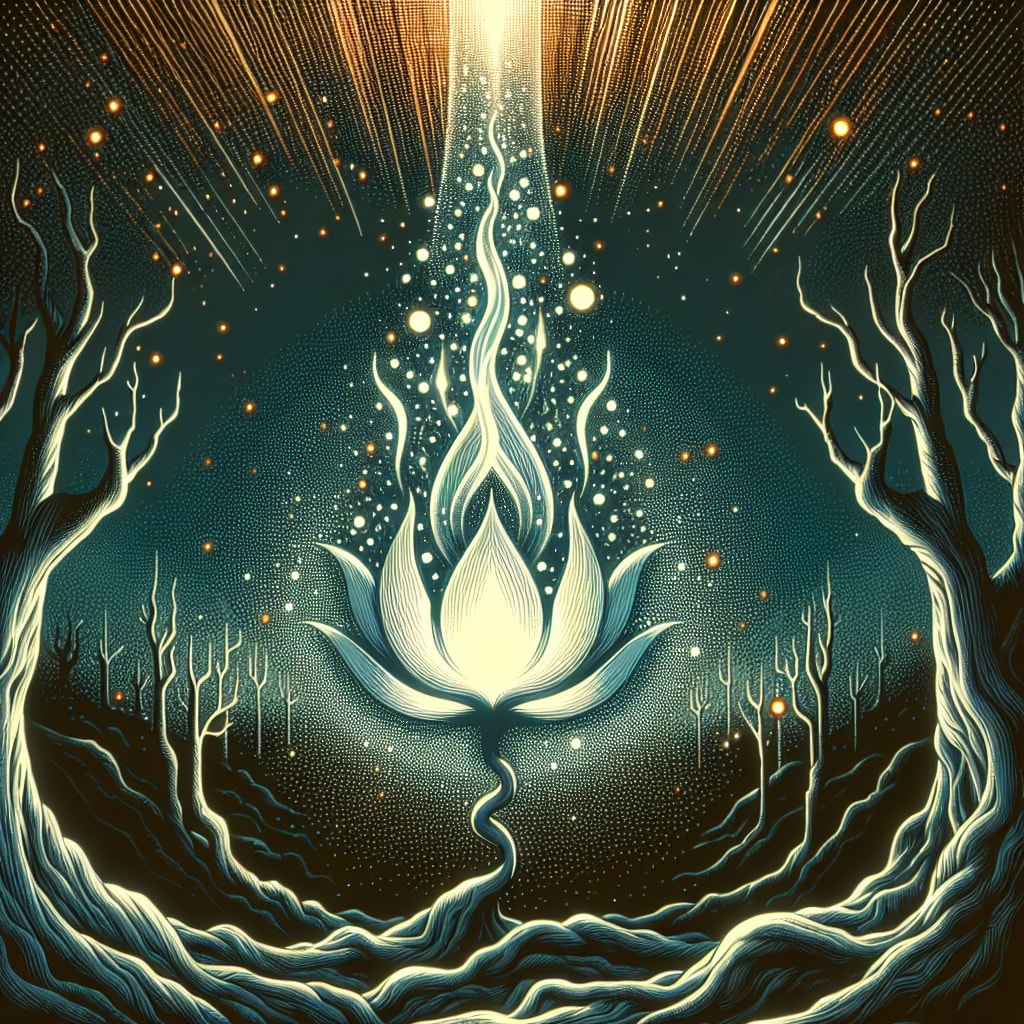The concept of 'Atma' or 'Self' is a fundamental theme that pervades the Mahabharata, Bhagavad Gita, and Sanskrit literature. It has its roots in ancient Indian thought and essentially represents the individual's eternal, innermost essence or soul.
In the Mahabharata, the grand epic in which the Bhagavad Gita is embedded, the 'Atma' is portrayed as transcending the physical body and the mortal realm. It's an integral aspect of the cosmic self, often referred to as 'Brahman'. Here, the 'Atma' is imperishable, it cannot be destroyed when the body perishes.
The Bhagavad Gita further explicates the concept of 'Atma'. In Chapter 2, it reveals the 'Atma' as immortal and eternal: it is never born, nor does it die. It's described as unchangeable, unmanifest, inconceivable, and immutable. The nuanced portrayal suggests that understanding the nature of the 'Atma' is paramount to the achievement of spiritual wisdom.
According to the Gita, the person who has realized their 'Atma' is 'sthitaprajna', the one with steady wisdom, who remains unfazed by material conditions, whether they be favorable or unfavorable. The Gita also posits that when one realizes the 'Atma', they see it in all beings, creating a sense of unity, compassion, and empathy-- a state often referred to as 'atmavat sarvabhuteshu'.
In Sanskrit literature, the 'Atma' is commonly equated with the individual's deep, true self, pure consciousness, which is always present but often obscured by ignorance and illusion. Texts like the Upanishads extend the understanding of the 'Atma' as synonymous with 'Brahman', the ultimate reality or cosmic self, emphasizing the non-duality of existence ('Advaita').
In conclusion, 'Atma' is a profound concept symbolizing the eternal, universal self beyond physical and ephemeral existences. It's synonymous with pure, unchanging consciousness and forms an essential cornerstone of the metaphysical landscape in Sanskrit literature, the Bahagvad Gita, and Mahabharata.

